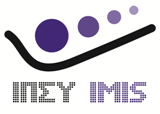WP1,Representation and retrieval of non-traditional data
How do we escape from the rigidity of traditional data?
The objective of the workpackage WP1: “Representation and retrieval of non-traditional data” is to provide representational models for non-traditional data that are metadata-rich, along with mechanisms for the automated extraction of this meta-information for new data, and indexing techniques that will facilitate the efficient retrieval of data on the basis of this meta-information.
- Task T1.1 introduces extensible representation models for non-traditional data (specifically, semi-structured, streaming and spatiotemporal data), with an emphasis to their meta-information (in terms of semantics, content and structure).
- Task T1.2 introduces mechanisms for the automatic extraction of meta-information (concerning content, structure, origin etc), which is typically hidden within the data, for the three aforementioned types of data.
- Task T1.3 explores the integration of existing indexing mechanisms into the dataspace management system, as well as the introduction of novel indexing mechanisms, wherever appropriate (since the coexistence of all these data within the same dataspace allows their joint management).



